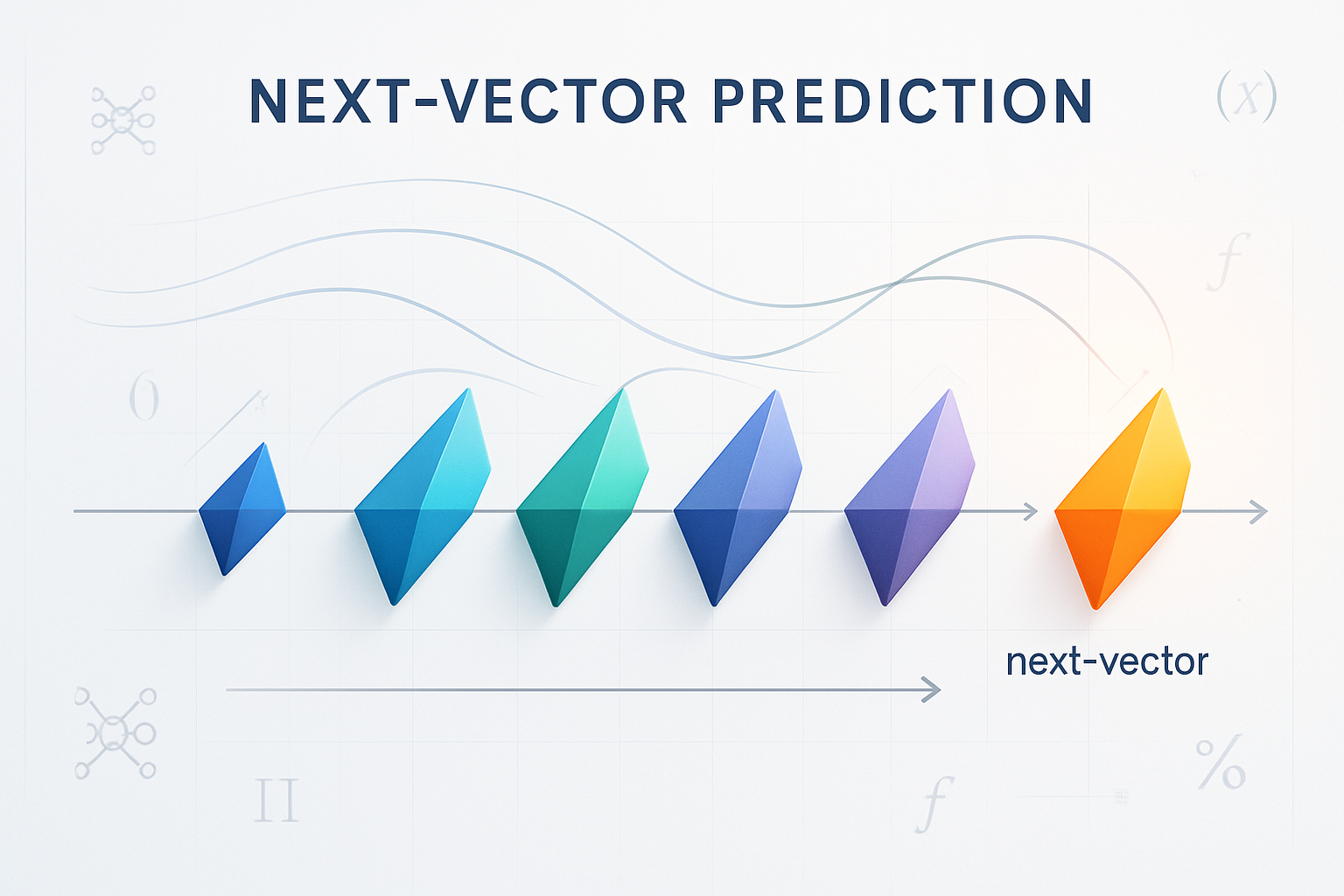TL;DR
Hao Yang, Qinghua Zhao, and Lei Li probe why Chain-of-Thought (CoT) prompting boosts reasoning in large language models (LLMs) by reversing the information pipeline—from the surface tokens produced during decoding, down through projection (token-probability space) to activation (feed-forward-network neurons).
Across six open-source LLaMA 3, Gemma 2, and Mixtral checkpoints (3 B → 70 B) and nine benchmark datasets that span arithmetic, commonsense, and symbolic reasoning, they find three converging mechanisms:
- Decoding-space pruning. CoT shepherds the model toward an answer template rather than free-form text; stronger template fidelity tracks higher task accuracy.
- Uncertainty compression. The token-probability distribution becomes sharper under CoT, indicating the model “knows what it wants to say” earlier.
- Neuron modulation. CoT reduces late-layer activation on open-domain tasks (e.g., GSM8K), acting like a cognitive “pruner,” but increases activation on closed-domain tasks (e.g., Coin Flip), operating as an “amplifier.”
Together these effects outline a mechanistic interpretation of CoT as a dynamic attention scaffold that reallocates representational bandwidth where each task needs it most, providing empirical ground for smarter prompt engineering. See the full paper on arXiv for code and datasets.
Introduction: Deciphering the Black Box of Reasoning
Large language models have revolutionized artificial intelligence, yet their prowess in complex reasoning remains tantalizingly opaque. Chain-of-Thought prompting—introduced by Wei et al. in their seminal 2022 work—emerged as a transformative technique, guiding models through step-by-step reasoning processes that dramatically enhance performance across arithmetic, commonsense, and symbolic reasoning tasks. But how exactly does this seemingly simple prompting strategy unlock such profound improvements?
The mystery deepens when considering the sheer scale and complexity of modern Large Language Models. These behemoths, with their billions of parameters and intricate transformer architectures, function largely as impenetrable “black boxes.”
Previous investigations have proposed tantalizing hypotheses: perhaps CoT reduces task complexity, maybe models merely imitate answer templates, or possibly prompt features unrelated to logical reasoning drive performance gains. Yet these theories, while intuitively compelling, lacked the rigorous experimental foundation necessary to establish definitive mechanistic understanding.
This study addresses that critical gap through a comprehensive mechanistic interpretability analysis, reverse-engineering the internal computational processes that enable CoT’s remarkable efficacy. The authors employ a novel three-phase framework, meticulously tracing information flow from the surface-level decoding of generated tokens, through the intermediate projection of internal states onto probability distributions, down to the fundamental activation patterns within feed-forward networks.
The investigation spans an impressive breadth: six diverse models ranging from compact 3B parameter systems to massive 70B architectures, evaluated across nine carefully selected datasets encompassing arithmetic reasoning (GSM8K, SVAMP, AQuA), commonsense reasoning (Bamboogle, StrategyQA, Date, Sports), and symbolic reasoning (Coin Flip, Last Letters Concatenation).
This comprehensive scope enables robust conclusions about CoT’s operational principles across varied model scales and reasoning paradigms.

Related Work: Positioning Within the Interpretability Landscape
Mechanistic Interpretability: Beyond Input-Output Correlations
The field of mechanistic interpretability represents a fundamental departure from traditional approaches focused solely on input-output relationships. Rather than merely observing what models do, this discipline seeks to understand how they accomplish their computational feats by dissecting internal structures and processes.
Recent advances have illuminated various architectural components: transformer feed-forward networks function as key-value memory systems linking textual patterns to output distributions, while individual neurons exhibit specialized functions ranging from universal pattern recognition to task-specific reasoning operations.
Sophisticated analytical techniques have emerged to probe these internal mechanisms. Activation patching localizes specific computations within model layers, embedding trajectory analysis tracks information flow through conceptual spaces, and extensions of the logit lens reveal how vocabulary representations evolve throughout processing.
These methodologies collectively provide the interpretability toolkit necessary for investigating complex phenomena like CoT’s influence on model behavior.
Chain-of-Thought: Structure Trumps Content
Prior CoT research has revealed a surprising principle: prompt structure matters more than content. Models demonstrate remarkable robustness to logically invalid reasoning steps, irrelevant intermediate computations, and even absent keywords—provided the overall reasoning framework remains intact.
This structural primacy suggests that CoT’s power lies not in teaching models to reason per se, but in providing organizational scaffolding that guides their existing capabilities.
Additional factors influencing CoT efficacy include reasoning step length (longer rationales boost performance), stylistic imitation patterns, and task-specific properties like probability distributions and memorization effects.
However, despite these insights, a crucial gap remained: the lack of direct experimental evidence linking external CoT prompts to specific internal computational changes within model architectures.
Methodology: A Three-Phase Analytical Framework
Experimental Design and Scope
The researchers constructed a comprehensive experimental framework encompassing six pretrained models from diverse families: LLaMA3.1 (8B, 70B), Gemma2 (2B, 9B, 27B), and LLaMA3.2-3B. Evaluation employed greedy decoding with 300-token limits to ensure deterministic outputs, with performance measured through accuracy metrics extracted via regular expressions.
The dataset selection strategy prioritized reasoning domains where CoT demonstrates substantial performance gains. Arithmetic reasoning tasks included GSM8K (open-domain word problems), SVAMP (mathematical scenarios), and AQuA (multiple-choice format).
Commonsense reasoning encompassed Bamboogle (biographical knowledge), StrategyQA (yes/no questions), Date (temporal reasoning), and Sports (domain-specific knowledge). Symbolic reasoning featured Coin Flip (logical state tracking) and Last Letters Concatenation (string manipulation).
This diverse collection enables analysis across varying answer spaces—from open-domain numerical responses to constrained binary choices—revealing how CoT’s mechanisms adapt to different reasoning requirements.

Phase 1: Decoding Analysis
The decoding phase investigation centers on test points—specific keywords reflecting key reasoning aspects observed in generated CoT steps. The researchers classified these into four categories:
- Time indicators (“before,” “therefore,” “initially”) signaling temporal order and causality
- Action words (“add,” “subtract,” “multiply”) representing operations
- Location and people references (“there,” “someone,” “his”) denoting entities
- Numbers (extracted via regular expressions) providing quantitative content
This categorization enables precise measurement of imitation patterns—the degree to which model outputs mirror keywords from prompts versus input questions. Additionally, the analysis examines adherence to a formalized CoT reasoning structure: Ep → O → Eg + Sl, where input entities undergo operations to produce intermediate entities and final answer statements.
Phase 2: Projection Analysis
The projection phase examines how internal model states map onto probability distributions over the vocabulary. This analysis proceeds along two dimensions:
Sequence probability analysis focuses on the common phrase “answer is…” across all datasets, computing kernel density estimates to visualize probability distribution characteristics. This approach reveals how CoT influences model confidence at critical decision points.
Individual token probability analysis employs entropy calculations—H(P) = −Σᵢ pᵢ log(pᵢ)—to measure uncertainty in vocabulary distributions. Lower entropy indicates more concentrated, confident predictions. The researchers strategically selected closed-domain datasets (AQuA, Sports, Coin Flip) with finite answer spaces to enable controlled analysis of prediction certainty.
Phase 3: Activation Analysis
The activation phase investigates neuron engagement patterns within feed-forward networks, formalized as:
h⁽ˡ⁾ = W⁽ˡ⁾_down(Act(h̃⁽ˡ⁾W⁽ˡ⁾_up))
where h̃⁽ˡ⁾ represents attention module output, W⁽ˡ⁾_up projects to higher-dimensional space, Act(·) applies activation functions (SwiGLU/GeLU), and W⁽ˡ⁾_down maps back to original dimensions. Neurons are considered activated when Act(h̃⁽ˡ⁾W⁽ˡ⁾_up) > 0.
The analysis examines both overall activation counts and layer-wise activation differences, revealing where and how CoT modulates neural activity patterns throughout model architectures.
Key Findings: Unveiling CoT’s Operational Principles
Decoding Phase: Structural Guidance and Template Adherence
The decoding analysis reveals fascinating imitation patterns that illuminate CoT’s guidance mechanisms. Models demonstrate systematic preferences for different keyword sources: “time” and “action” words are predominantly imitated from CoT prompts, while “number” keywords derive primarily from input questions. This differential imitation pattern suggests that CoT prompts provide structural scaffolding while input questions supply specific content to populate that framework.
Remarkably, imitation patterns vary dramatically across task types. Open-domain tasks requiring substantial external knowledge (Bamboogle, StrategyQA, Sports) exhibit lower question keyword imitation, as necessary reasoning information isn’t contained within input questions. Conversely, structured symbolic tasks like Last Letters Concatenation show balanced imitation, reflecting high relevance of both prompt and question keywords.
The reasoning structure adherence analysis provides compelling quantitative evidence for CoT’s template-based operation. Cross-dataset prompt transfer experiments demonstrate strong positive correlations between “Imitation Count” (structural adherence) and task accuracy. Prompts with reasoning patterns aligned to target tasks (sequential/arithmetic structures for GSM8K) achieve high adherence and superior performance, while misaligned prompts (commonsense-focused Sports-CoT applied to arithmetic problems) yield poor structural adherence and degraded accuracy.
This finding fundamentally challenges assumptions about logical reasoning requirements. CoT’s effectiveness stems from structural template adherence rather than logical correctness—explaining why logically flawed steps can still enhance performance provided they maintain the expected reasoning format.
Projection Phase: Concentration and Certainty
The projection analysis reveals dramatic shifts in probability landscapes under CoT guidance. Kernel density estimation of “answer is…” phrase probabilities consistently shows CoT generating higher, more concentrated probability distributions compared to standard prompts. This concentration effect appears across diverse datasets and model architectures, indicating that CoT’s structured guidance effectively constrains decoding spaces by limiting plausible next-token continuations.

Entropy analysis provides complementary evidence for reduced predictive uncertainty. Across all examined closed-domain datasets, CoT prompts generate substantially lower entropy values than standard prompts, demonstrating more focused probability distributions. This reduction manifests consistently regardless of answer correctness, suggesting that CoT fundamentally alters decision-making processes rather than merely improving accuracy through better reasoning.
The implications are profound: CoT appears to function as a confidence amplifier, sharpening decision boundaries in probability landscapes. By providing intermediate reasoning steps, CoT reduces ambiguity in token prediction, enabling more decisive generation of concluding elements. This mechanism complements the structural adherence findings, suggesting that template-based guidance both organizes reasoning processes and enhances prediction certainty.
Activation Phase: Task-Dependent Neural Modulation
Perhaps the most surprising discovery emerges from activation analysis: CoT exhibits task-dependent neural modulation patterns that directly contradict assumptions of uniform operation across reasoning types. Overall neuron activation counts consistently show downward shifts under CoT guidance—for instance, AQuA standard prompts engage ~820K neurons versus ~790K under CoT prompts in LLaMA3.1-70B.
However, layer-wise analysis reveals striking task-specific contrasts. Open-domain tasks (GSM8K, Bamboogle) exhibit negative activation differences (ΔA⁽ˡ⁾ < 0) in final model layers, while closed-domain tasks (Coin Flip, AQuA, Sports) show positive activation differences (ΔA⁽ˡ⁾ > 0) in corresponding regions. This bifurcation appears consistently across model sizes and architectures.
The researchers propose compelling mechanistic interpretations for these patterns. In open-domain scenarios requiring navigation of vast solution spaces, CoT’s step-by-step guidance enables focused processing by explicitly laying out reasoning paths. This focused approach allows selective engagement of relevant features while suppressing irrelevant neural activity—hence the observed activation reduction.
Conversely, closed-domain tasks with limited answer options may benefit from comprehensive option evaluation. CoT’s guidance might encourage thorough consideration of all plausible choices by activating relevant feature-encoding neurons, explaining increased later-layer activation. This suggests CoT functions dynamically: as a “pruner” for open-domain tasks and an “amplifier” for closed-domain scenarios.
Model size influences these patterns, with larger architectures (70B parameters) exhibiting more pronounced and widespread activation differences compared to smaller models (3B parameters). This scaling effect likely reflects how CoT enables better utilization of increased representational capacity in larger systems.
Critical Analysis and Implications
Mechanistic Insights and Theoretical Advances
This research fundamentally advances our understanding of CoT’s operational principles through several groundbreaking contributions. The demonstration that structural adherence correlates more strongly with performance than logical validity challenges decades of assumptions about reasoning requirements in artificial systems. Rather than teaching models to reason, CoT provides organizational templates that harness existing capabilities more effectively.
The task-dependent modulation discovery represents perhaps the study’s most significant theoretical advance. Previous work assumed CoT operates uniformly across reasoning domains, but these findings reveal sophisticated adaptive mechanisms. CoT’s ability to function as both a neural “pruner” and “amplifier” depending on task characteristics suggests far more nuanced computational strategies than previously recognized.
The probability concentration effects provide crucial insights into CoT’s confidence-enhancement mechanisms. By demonstrating reduced entropy and more focused distributions, the research illuminates how intermediate reasoning steps fundamentally alter decision-making processes. This understanding enables more precise predictions about when and why CoT will prove effective.
Practical Applications and Design Principles
These mechanistic insights yield immediate practical implications for prompt engineering and model development. The structural adherence findings suggest that effective CoT prompts should prioritize format consistency over logical perfection—a counterintuitive but empirically supported principle.
The task-dependent modulation discovery enables targeted prompt design strategies. Open-domain reasoning tasks may benefit from CoT prompts emphasizing clear sequential structure to enable neural pruning, while closed-domain scenarios might require prompts encouraging comprehensive option evaluation to leverage neural amplification effects.
Model scaling considerations also emerge from the activation analysis. Larger models show more pronounced CoT effects, suggesting that the technique’s benefits may increase with architectural scale—an important consideration for future model development and deployment strategies.
Broader Implications for AI Safety and Interpretability
This work contributes significantly to broader AI safety and interpretability goals. By providing mechanistic understanding of CoT’s operation, the research enables more predictable and controllable model behavior. Understanding when CoT functions as a pruner versus amplifier allows practitioners to anticipate failure modes and design appropriate safeguards.
The methodological framework developed here—tracing information flow through decoding, projection, and activation phases—provides a template for investigating other prompting techniques and architectural innovations. This systematic approach could accelerate interpretability research across diverse AI applications.
Limitations and Future Directions
Methodological Constraints
The authors acknowledge several important limitations in their current approach. Modern LLMs’ immense scale and complexity make definitive causal attribution extraordinarily challenging. While the study demonstrates strong correlations between CoT prompts and specific internal changes, establishing absolute causality requires additional methodological advances currently at the frontier of interpretability research.
The observational nature of current interpretability techniques limits conclusions to suggestive rather than definitively causal relationships. Future work must develop interventional methods capable of directly manipulating specific neural components to establish causal links between CoT prompts and observed behavioral changes.
Technical and Scope Limitations
The current analysis focuses on vanilla CoT prompting, leaving numerous extensions unexplored. Techniques like self-consistency, program-of-thought, and tree-of-thought may exhibit different mechanistic patterns worthy of independent investigation. Additionally, the study’s concentration on English-language reasoning tasks leaves cross-lingual and multilingual CoT mechanisms unexplored.
Model architecture diversity represents another limitation. While the study encompasses multiple model families, the exclusive focus on transformer-based systems leaves alternative architectures unexamined. Future research should investigate whether these mechanistic insights generalize to other model types.
Future Research Directions
Several promising research avenues emerge from this foundational work. Investigating the interplay between task properties (difficulty, type, domain) and activation patterns could yield more precise predictive models of CoT effectiveness. Exploring how different CoT variants (self-consistency, multi-step, etc.) exhibit distinct mechanistic signatures would further refine our understanding.
Cross-architectural studies comparing CoT mechanisms across different model types could reveal universal versus architecture-specific principles. Additionally, developing interventional techniques to directly manipulate specific neural components would enable stronger causal claims about CoT’s operational mechanisms.
The temporal dynamics of activation patterns throughout reasoning processes represent another fertile research area. Understanding how neural engagement evolves across reasoning steps could illuminate the dynamic interplay between structural guidance and content processing.
Conclusion: Toward Mechanistic Understanding of AI Reasoning
This comprehensive investigation represents a watershed moment in our understanding of Chain-of-Thought prompting’s internal mechanisms. By systematically tracing information flow through decoding, projection, and activation phases, the research unveils CoT’s sophisticated operational principles: template-based structural guidance, probability concentration effects, and task-dependent neural modulation patterns.
The findings fundamentally challenge previous assumptions about reasoning requirements in artificial systems. Rather than teaching logical reasoning per se, CoT harnesses existing model capabilities through organizational scaffolding that adapts dynamically to task characteristics. This nuanced understanding enables more effective prompt design and provides crucial insights for future model development.
The broader implications extend beyond CoT specifically to general principles of prompt engineering and model interpretability. The methodological framework developed here provides a template for investigating other prompting techniques, while the mechanistic insights inform theoretical understanding of how linguistic guidance shapes computational processes in large-scale neural systems.
Perhaps most importantly, this work demonstrates the feasibility and value of mechanistic interpretability approaches for understanding complex AI behaviors. By revealing the internal machinery underlying CoT’s effectiveness, the research moves us closer to truly transparent and controllable artificial intelligence systems—a crucial step toward safe and beneficial AI deployment.
As large language models continue evolving in scale and capability, mechanistic understanding becomes increasingly vital for ensuring their reliable and beneficial operation. This study provides both specific insights about CoT’s mechanisms and general methodological approaches for probing the internal workings of increasingly sophisticated AI systems.
The journey toward fully interpretable artificial intelligence remains challenging, but investigations like this illuminate the path forward through rigorous empirical analysis of internal computational processes.
The revolution in AI capabilities demands corresponding advances in AI understanding. Through careful mechanistic analysis, we can begin to open the “black box” of modern AI systems, revealing the computational principles that enable their remarkable achievements while ensuring their continued alignment with human values and objectives.











Comments 1